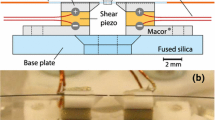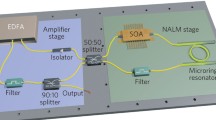Abstract.
We demonstrate a new method to measure weak birefringence of dielectric mirrors with excellent spatial resolution and sensitivity (<10-7 radians). We exploit a well-known optical feedback scheme for line-width narrowing and frequency locking of a diode laser to a high-finesse cavity. Feedback comes from the intracavity field which builds up at resonance, selected by its change in polarization with respect to the incident field. This change, due to the residual birefringence of the cavity mirror coatings, was already exploited for birefringence measurements using an active laser-locking scheme. Here we measure the optical feedback rate as a function of rotation angle of one of the cavity mirrors (around the cavity axis). A stable feedback signal is obtained since the laser, as soon as it locks to a cavity resonance, effectively behaves as a monochromatic source. By fitting the data with a theoretical expression, we determine quantitatively the local birefringence vectors of both mirrors, which are around 10-6 radians. Our scheme is simple, works with cavities of very high finesse (F∼105), and is promising for measuring birefringence in gases induced by external fields.
Similar content being viewed by others
Author information
Authors and Affiliations
Additional information
Received: 18 July 2001 / Final version: 14 March 2002 / Published online: 8 May 2002
Rights and permissions
About this article
Cite this article
Morville, J., Romanini, D. Sensitive birefringence measurement in a high-finesse resonator using diode laser optical self-locking. Appl Phys B 74, 495–501 (2002). https://doi.org/10.1007/s003400200854
Published:
Issue Date:
DOI: https://doi.org/10.1007/s003400200854




